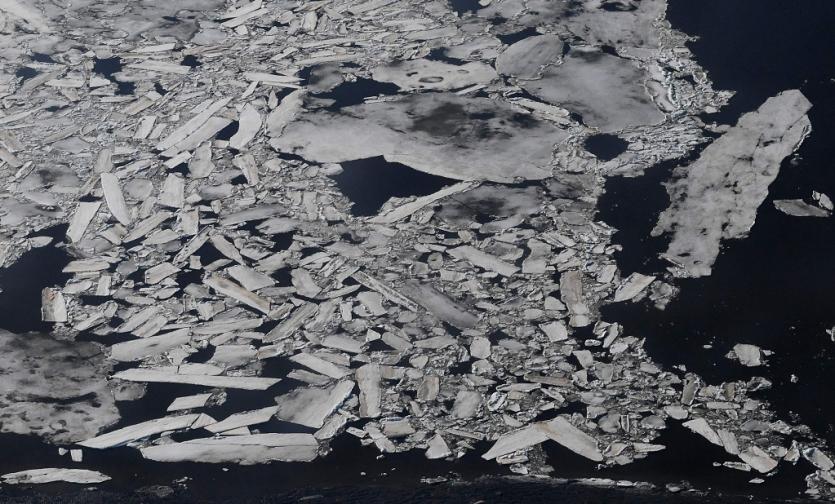Ice breaks up early on the Kuskokwim River beside the Bering Sea and near the climate change-affected Yupik Eskimo village of Quinhagak on the Yukon Delta in Alaska, April 12, 2019. Photo:AFP
Lowest level of ice on the Bering Sea in a millennia
By Patryk Krych | The World Daily | SEPTEMBER 3rd 2020
The levels of ice on the Bering sea are at their lowest in over thousands of years, scientists warn, as discovered through decades of study. A reflection of the tragic and dangerous reality of the impacts of climate change.
The Bering sea is a deep water basin that resides in the Northern Pacific Ocean, dividing Eurasia and America. It also borders the Arctic ocean, which is known to completely freeze over during the winter. Over the decades, however, the development of ice has been noted to be dropping, and with the new research, it’s even been ascertained that the ice on the Bering sea is at its lowest for over 5500 years, particularly in the years 2018 and 2019
“We are essentially locked into a complete loss of winter sea ice in the Bering Sea,” says Miriam Jones, who had begun the research while at the University of Alaska Fairbanks and is now working at the US Geological Survey in Virginia. “In those two years in particular, it was very alarming because it was unprecedented.”
The use of satellite imagery has been a great help in showing the changes in the Bering sea’s ice levels over the last four decades, and any records of the sea ice before that were the ones available in ship logs, or in general observations. None in any study, beforehand. Thus, for the study, scientists analysed peatland -a type of wetland that can be found in almost every country- on the St. Matthew island off Alaska.
According to the study published in the journal ‘Science Advances’, the compound plants found within the peatlands date back a millennia, and by studying the oxygen molecules that’d been trapped in the peatland’s sediment, the scientists were able to determine the weather conditions that could affect sea ice of the region, dating back 5500 years. In this way, they could estimate the sea ice levels of the Bering sea, serving as a “book going back in time.”
The results essentially showed a gradual decrease in ice within the Bering sea over those 5500 years, a response to winter insolation and rising CO2 levels in the atmosphere. This suggests the North Pacific regions are highly sensitive to even the smallest changes in radiative forcing. The sea’s ice conditions in 2018 are considered to be by far the worst in these 5500 years.
Another discovery found within these peatland cores is that there’s a definite correlation between the Bering’s sea ice levels and the amount of carbon in the atmosphere, in which the changes to the sea ice lag several decades behind the changes to the atmospheric carbon. What this implies is that even if climate change were to be halted entirely within the year, the complete loss of all the Bering’s sea ice would still be inevitable, and would occur within a few decades. Consequential effects would also be had on the Arctic ocean.






